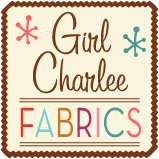Today's post is another thing near and dear to my heart. And chances are you've experienced this at least once in your sewing.
Today we're talking about hems! Now before you go, "HOW BORING!" and close that browser tab, hear me out.
Let's start at the very beginning. What is a hem and what does it do?
A hem is any part of a piece of cloth that has been turned under and sewn. But the real magic is what does a hem do? A hem isn't just to keep your fabric from unraveling. Your hem is actually meant to effect the drape of your garment. Most people don't know that, but that is the exact reason why we have different kinds of hems on different garments.
The heavier your fabric, the heavier your hem needs to be. But also, the longer the garment, the bigger the hem. So in general shirts have shorter/thinner hems than maxi skirts. And you'd have a shorter/lighter hem on chambray versus corduroy.
 Why does all this matter? Take a look at this hem. The problem here isn't a failure to iron (although I'm definitely guilty of that), the problem is that the hem is either 1 too short, 2 stitched using a stitch that was too tight, or stitched too close to the edge of the fabric. I hate rolling hems. They drive me CRAZY! Any attempt to smooth them down won't even work. Ironing won't work. They will continue to roll up. :(
Why does all this matter? Take a look at this hem. The problem here isn't a failure to iron (although I'm definitely guilty of that), the problem is that the hem is either 1 too short, 2 stitched using a stitch that was too tight, or stitched too close to the edge of the fabric. I hate rolling hems. They drive me CRAZY! Any attempt to smooth them down won't even work. Ironing won't work. They will continue to roll up. :( Now, I'm one of those people that would rather waste a little fabric, than risk having a yucky hem. So when it comes to tops, I'm ok with a hem that is about 1/2" (or longer) either double folded (1/4" +1/4") OR serged and then turned under 1/2". And dresses NEVER get less than a 1" hem. That means I can be 100% sure that my hems won't roll up. You can see my 1" hem on a cotton lycra dress to the left. No rolling. YEAH!
Now, I'm one of those people that would rather waste a little fabric, than risk having a yucky hem. So when it comes to tops, I'm ok with a hem that is about 1/2" (or longer) either double folded (1/4" +1/4") OR serged and then turned under 1/2". And dresses NEVER get less than a 1" hem. That means I can be 100% sure that my hems won't roll up. You can see my 1" hem on a cotton lycra dress to the left. No rolling. YEAH!Alternative hemming options:
 |
| Photo Credit Flickr |
A full facing. Facings are a beautiful couture type method of finishing a hem. It can be used to make an invisible hem. It essentially doubles the fabric at the bottom of the hem just like a band, only it is hidden inside. Please note that the image with the green hem is a combination of a full band and a full facing since the 2 fabrics are different.
 |
| Photo Credit Pixabay |
 |
| Photo Credit Pixabay |
Horsehair braid hems make for amazing shaping. Obviously this isn't going to be an every day type finish but when you use it, you can expect that it will give an amazing look. You can see a tutorial for working with horsehair braid here at Gertie's New Blog for Better Sewing
 |
| Photo Credit: Flickr |
Now here's the HUGE thing. No one is going to come around policing you about your hem choices. No one is going to knock on your door and say, "You can't use that hem method on that garment". And knowing which hem is best takes a bit of art and practice, because knowing the weight of your fabric and how it drapes will change how you can hem it. So just because a pattern says use an XYZ hem, doesn't mean you have to use the hem they recommend. Learn your fabric and learn what it really needs to give you the look you want. And just remember, if your hem starts rolling, you have options to fix it.
I found this article at "Sew Mama Sew" to be very helpful in learning about hems. I hope you will too!
Until next time. :)





















1 comments
Great post. Hems are all about weight and if not enough weight is added with the proper technique they can look very Becky Home Ec-y.
ReplyDeleteJust thought I'd mention another hem we see, the raw edge on knits. This is simply a cut edge and can be found in retail. I've tried it and it can look ok but not for long. I have found it gets worn looking in the wash over time and I then regret not doing a regular sort of hem. So I don't use that method any more, which clearly is a way for manufacturers to cut labor costs and nothing more. I like to hem my knits with an inch and a quarter hem and double topstitch it at the top edge. I've seen that finish a lot in retail and it holds up nicely. Thanks for all this infor.